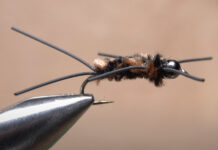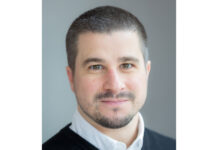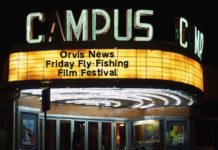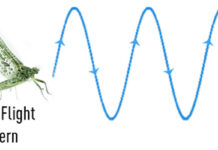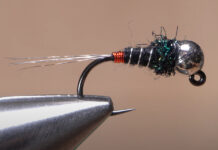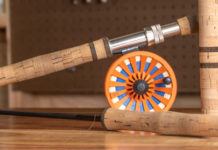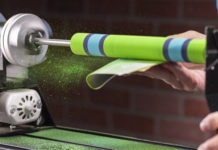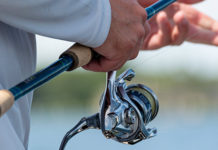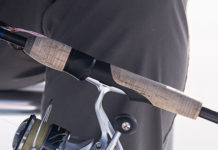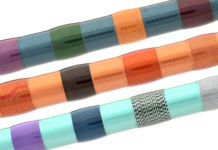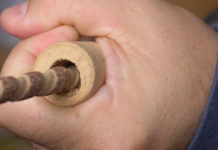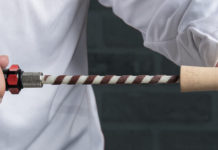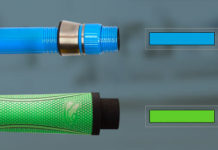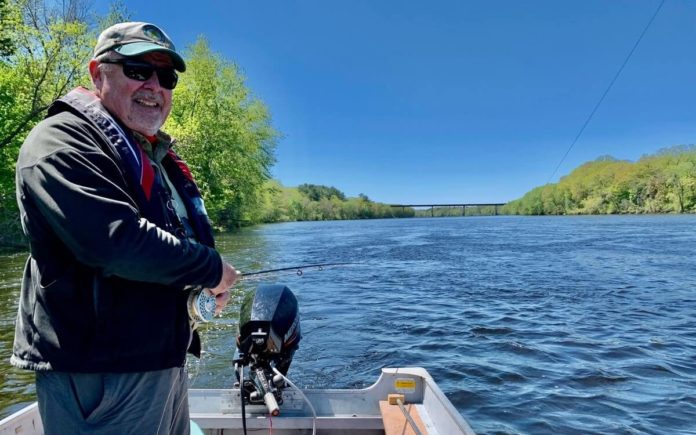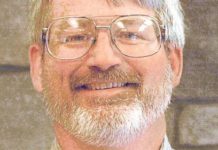WATERVILLE, Maine — Willie Grenier grew up in Lewiston as an avid angler.
His enthusiasm for fishing in the Little Androscoggin River was ruined when, as a youngster, he saw human feces in the water while he was fishing.
“Trying to fish in the Little Androscoggin and not being able to fish because it was polluted, it really affected me,” Grenier said of what planted the seed for many future years of educating Mainers about the environment.
In those days, the late 1950s, Maine’s industrial rivers were polluted by effluent from paper mills operating along their banks, and by raw sewage that was dumped into the water. Stricter pollution standards and efforts by conservation groups have significantly cleaned up Maine waters.
That includes the Kennebec River, which Grenier and his wife, Jan, live about 300 yards from at their home in Waterville. Now the 75-year-old promotes the once-polluted Kennebec as a productive water to catch American shad, which regained access to that stretch of the river in 1999 when the Edwards Dam in Augusta was removed.
“I like to take people who’ve never fished and catch shad, give them a thrill,” Grenier said.
But Grenier quickly discovered that the presence of four hydroelectric projects, including Brookfield Renewable’s Lockwood Dam just up the river from his home, continues to hamper Atlantic salmon and other species. He has made it his personal mission to educate people on river restoration and for several years has worked with the Maine Chapter of Trout Unlimited to promote shad fishing and teach people about the Kennebec’s fisheries.
“He’s one of the nicest two people I ever met on the river,” said Jeff Reardon, Trout Unlimited’s Maine Brook Trout Project Director.
“He figured out the fishery very early and has been an ambassador for it ever since,” Reardon said. “I have no idea how many people Willie has taken out on the river over the years, but he is on the river most days during the May-June shad season, and often will have more than one guest per day join him.”
With Edwards Dam gone, Atlantic salmon, shad and alewives were able to swim upstream to Lockwood Dam. But that is where the journey ends for most of them.
A fishway, which leads to holding tanks, is used to capture and transport a small number of Atlantic salmon and alewives upriver via truck to their historical spawning grounds. Most fish, including shad, turn around and eventually make their way back to the ocean.
Grenier said that the removal of the dams could help restore populations of Atlantic salmon, shad and other sea-run fish.

“They keep coming back every year to try to spawn,” Grenier said of the shad. “They keep trying to go past that dam, but will never do that.”
Grenier embraced the shad fishery that took hold after the removal of Edwards Dam. Each May, he spends countless days in his 14-foot aluminum boat, treating friends and novice anglers alike to exciting fishing.
On a recent blustery May day, I spent several enlightening and productive hours with Grenier. He knows the river intimately, including the best places to target shad using a fly rod and sinking fly line and lures known as shad “darts.”
His proven techniques produced some beautiful fish, ranging from approximately 12 to 24 inches and weighing 2 1/2 to 5 pounds.
I experienced growing pains figuring out how to get the feisty fish back to the boat without encountering the propeller blade or having a fish shake the hook.
Grenier was patient and encouraging, his demeanor honed through dedicating 35 years of his life to teaching elementary and middle school children.
Fort Halifax park, near the mouth of the Sebasticook River, was abuzz with activity. Two or three waves of high school students arrived and fanned out along the shoreline, enthusiastically casting into the water.

I couldn’t help wondering whether in their lifetimes they might catch a glimpse of Atlantic salmon, headed toward the Sandy River to spawn, without a dam blocking their path.
When he’s not fishing, Grenier is teaching. He previously directed Trout Unlimited’s trout camp on the river and still does numerous school talks about Atlantic salmon and the Kennebec.
“His long career as a teacher, and the presentations on the Clean Water Act and the restoration of the Kennebec River that he continues to give to local schools, and anyone else who might be interested, has helped bring forward several generations of river rats/anglers/conservation advocates,” Reardon said.
Our outing was a success. Grenier caught several shad, including some fat ones. He deftly scooped up the fish with his homemade, long-handled net in one hand and the fly rod in the other.
I managed to boat three or four, but only through his guidance.
Grenier says this is his last year volunteering as a shad fishing guide and conservation proponent on the Kennebec. He hopes instead to spend more time fly fishing for brook trout at places such as the Dead River.
“My wife said, ‘I’ll believe it when I see it,’” Grenier said of his potential “retirement.”
That doesn’t mean he’ll be any less invested in the future health and productivity of the Kennebec.
He has come to grips with the reality he’ll never be able to fish for Atlantic salmon. Even if the remaining dams are eventually removed, the fisheries restoration process could take decades.
Advocating for the Kennebec is one small way to promote the importance of establishing a general commitment to preserving natural resources.
“There’s no Planet B,” Grenier said of the slogan appearing on a T-shirt given to him by a former student who is now a middle school teacher.

“The bottom line is, I want our future generations to survive. As a kid, I didn’t think it was going to happen.”
Grenier is hopeful that the Kennebec eventually will be returned to a more natural state.
“The reason it’s meaningful to me is I want to see it happen,” Grenier said. “I want to be able to see that the Atlantic salmon are going back to their spawning ground.”
Ironically, one inevitable result of such a development is that shad would no longer be held captive below Lockwood Dam, waiting to be caught by opportunistic anglers.
“I’d like to see the day when I can come here and not catch any shad,” Grenier said. “If I can’t catch them, that means they’ve gone to their spawning grounds. It’s better that those fish go where they’re supposed to be.”
More articles from the BDN
Credit: Source link


